Six Factors in Selecting Hydraulic or Shrink-Fit Holders
Shrink-fit and hydraulic holders are both useful in low clearance, tight work envelopes found in moldmaking and multi-axis machining applications. When deciding which one to use, their differences will guide your choice. Here are some of the fundamental contrasts to help you decide which holder type is best for your work.
Hydraulic holders (shown here) and shrink-fit holders share a middle-of-the-road gripping strength: about half that of a milling chuck and about double that of collet chucks. The superior vibration control of hydraulic chucks makes them good choices for finish milling, reaming and drilling work. While they may not be as precise, the rigidity of shrink-fit holders makes them effective in moderate to heavy milling work where clearance is an issue, and in many high speed scenarios.
Shrink-fit and hydraulic holders are especially useful in low clearance, tight work envelopes because of their relatively slim design. This has made them effective in moldmaking applications and more coveted since the widespread adoption of multi-axis machinery. Hydraulic and shrink-fit holders also share a middle-of-the-road gripping strength: about half that of a milling chuck and about double that of collet chucks. These similarities are why we’re taking the time to compare the two. When it comes to deciding between one or the other, it’s the differences that will guide the choice. So let’s dig into some of the fundamental contrasts that may help you decide which holder type is best for you and your work.
Initial Investment
When it comes to the holders themselves, shrink-fit is generally a slightly lower cost. The delicate hydraulic clamping systems built into the holders add cost when compared to the simple and solid bodies of shrink-fit holders. Where the major difference lies is in the equipment needed to heat the shrink-fit holders. When heated to the proper temperature, the resulting growth of the ID allows the tool to be slipped into the bore. Once cooled, the holder expands, gripping the tool. This process, especially the induction heating, involves cost. Shrink-fit heating systems start at around $5,000 and go up from there. They also require fairly significant power, adding a slight ongoing expense.
Maintenance
If you want to see a full return on your shrink-fit investment and then some, maintenance is critical. When dealing with temperatures that can approach 600 deg F, the stakes are heightened. This is why we recommend using dry cutting tools without oil on them. From there, diligent attention must be paid to the cleanliness of holder bores and tool shanks. Any contamination will be baked onto the metal and progressively deteriorate performance. When it comes to hydraulic chucks, maintenance is straightforward as long as the hydraulic chamber stays sealed. To ensure the hydraulic system performs consistently, we recommend using test pins to gauge its force over time.
Training, Handling and Safety
Hydraulic chucks are infinitely simple. A turn of a wrench locks the tool in place. When it comes to shrink-fit systems, there are a few more factors to consider when getting the team up to speed, including safety considerations. Aside from the operators who handle the tooling and heating system directly, others on the floor need to be made aware of the risk of burns. Heating stations are usually benchtop arrangements because of the power requirements. This means hot metal will need to be transported across the floor in one form or another. Another training consideration is that tools can be overcooked, so to speak. This will cause permanent damage that harms performance. Operators must understand, know how to prevent and diagnose this.
Setup
As mentioned earlier, hydraulic chucks use a simple wrench to lock in the tool. Tools can also be swapped at the machine or offline. When it comes to shrink-fit setups, they must be done exclusively offline where the heating and cooling can be powered. Most heating cycles can be as fast as 15 seconds. Cooling can take several minutes, even with assistance like air. Having extra compatible holders is a viable solution to speed concerns, if you’re comfortable with the additional investment. All that being said, there are significant time-saving opportunities to be found setting up tools offline. We believe strongly in tool measuring systems and recommend offline setup when and where applicable.
Vibration
Hydraulic chucks have two specific advantages in terms of vibration and accuracy. The first is that shrink-fit tools and holders are dependent on the heating and cooling processes being consistent. This brings us back to the maintenance section above; the slightest imperfection in the holder bore, not to mention the natural inconsistencies in the heating and cooling processes, can be multiplied at the cutting edge in the form of vibration or runout. There is also the chance of some variation from operator to operator. Hydraulic chucks are less reliant on these variables and their production is imminently consistent. Once a master bore is established during manufacturing and assembly, it’s a repeatable process over thousands of cycles. This translates to consistent clamping tolerances and forces over the life of the holder. The second advantage is the natural damping characteristics that hydraulics provide. That’s not to say shrink-fit holders are ineffective in terms of vibration management. Their runout is five times better than side-lock holders.
Roughing and Finishing
That brings us to some application talk. While they may not be as precise, shrink-fit holders’ rigidity makes them effective in moderate to heavy milling work where clearance is an issue, and in many high speed scenarios. The superior vibration control of hydraulic chucks makes them good choices for finish milling, reaming and drilling work.
Final Word
Up to this point, you may think I’m an advocate of hydraulic chucks over shrink-fit holders, but that’s not the case. We offer both products. In fact, shrink-fit holders are fundamentally the perfect tool holder. From an engineering perspective, there are no moving parts, no additional components, they use the properties of the holder itself to grip the tool and they’re symmetrically round. But as we all know, a manufacturing floor is not a perfect environment. Variables must be considered when choosing equipment. Should the choice between hydraulic chucks and shrink-fit holders come up, the factors discussed here will help guide your choice.

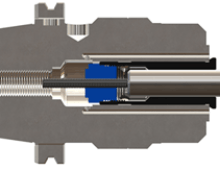
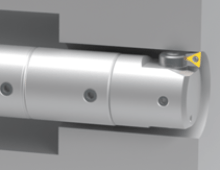
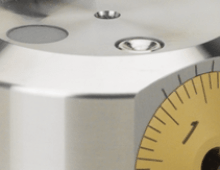
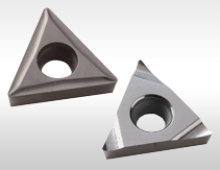
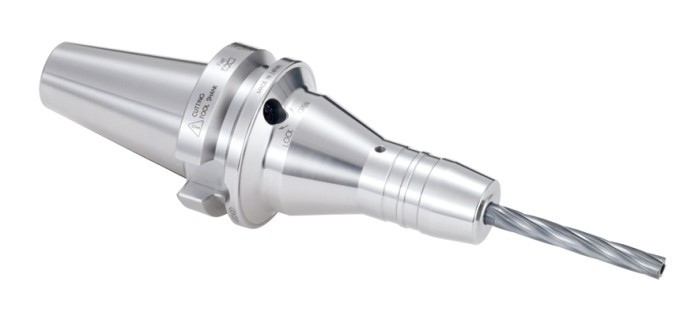
¿Te pareció interesante o útil? Haznos saber tu opinión agregando tus comentarios o preguntas a continuación.